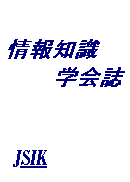Volume 30, Issue 3
Displaying 1-8 of 8 articles from this issue
- |<
- <
- 1
- >
- >|
-
Article type: research paper
2020 Volume 30 Issue 3 Pages 299-311
Published: September 30, 2020
Released on J-STAGE: November 06, 2020
Advance online publication: May 08, 2020Download PDF (1039K) -
Article type: research paper
2020 Volume 30 Issue 3 Pages 312-327
Published: September 30, 2020
Released on J-STAGE: November 06, 2020
Advance online publication: April 17, 2020Download PDF (2314K) -
Article type: research paper
2020 Volume 30 Issue 3 Pages 328-348
Published: September 30, 2020
Released on J-STAGE: November 06, 2020
Advance online publication: June 05, 2020Download PDF (710K) -
Article type: research paper
2020 Volume 30 Issue 3 Pages 349-360
Published: September 30, 2020
Released on J-STAGE: November 06, 2020
Advance online publication: June 12, 2020Download PDF (890K) -
Article type: research paper
2020 Volume 30 Issue 3 Pages 361-369
Published: September 30, 2020
Released on J-STAGE: November 06, 2020
Advance online publication: July 31, 2020Download PDF (1450K) -
Article type: research paper
2020 Volume 30 Issue 3 Pages 370-389
Published: September 30, 2020
Released on J-STAGE: November 06, 2020
Advance online publication: July 10, 2020Download PDF (2444K) -
Article type: Research Paper
2020 Volume 30 Issue 3 Pages 390-400
Published: September 30, 2020
Released on J-STAGE: November 06, 2020
Download PDF (988K) -
Article type: Book Reviews
2020 Volume 30 Issue 3 Pages 401-402
Published: September 30, 2020
Released on J-STAGE: November 06, 2020
Download PDF (401K)
- |<
- <
- 1
- >
- >|
